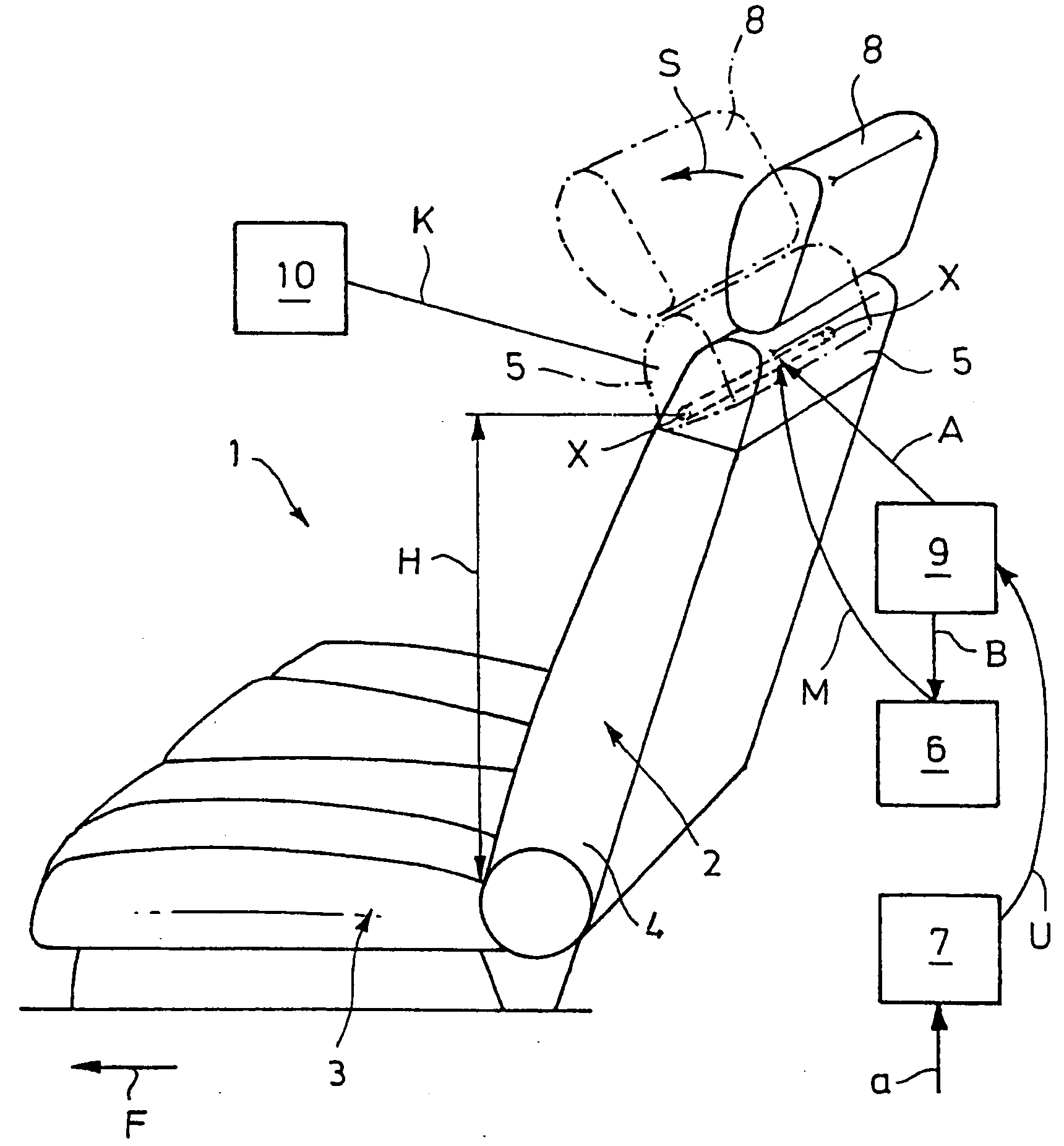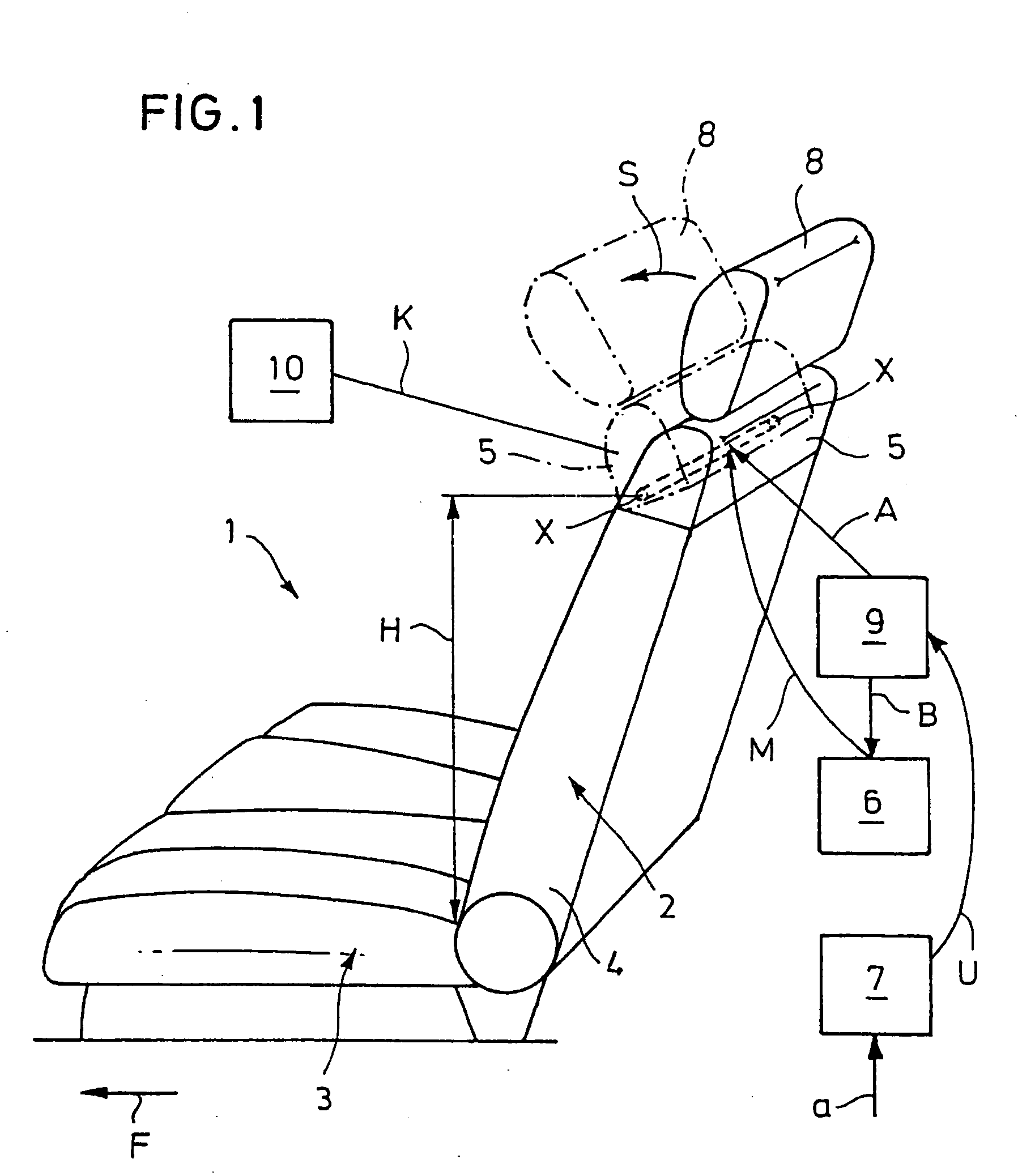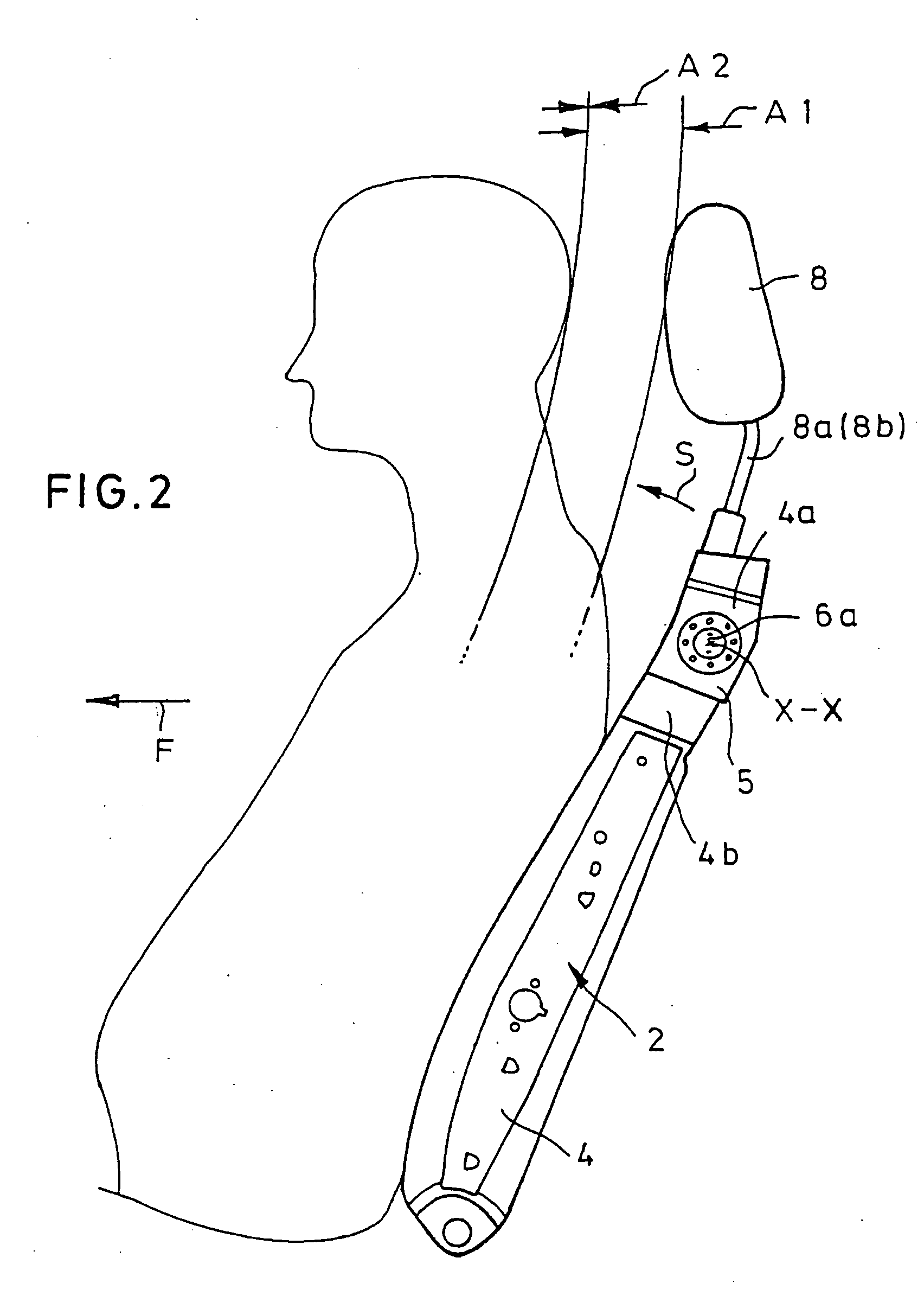Seat back for a vehicle seat comprising an integrated protective device
a protective device and seat back technology, applied in the direction of screws, chairs, threaded fasteners, etc., can solve the problems of inability to fully protect the head, so as to reduce the impact of the occupant's head, reduce the effect of installation space, and reduce the effect of internal acceleration
- Summary
- Abstract
- Description
- Claims
- Application Information
AI Technical Summary
Benefits of technology
Problems solved by technology
Method used
Image
Examples
Embodiment Construction
[0031] In the various Figures of the drawings, identical parts are always given the same reference characters, so that as a rule each is also described only once.
[0032] As is evident firstly from FIG. 1, a vehicle seat 1 comprises a seatback 2 according to the present invention and a seat part 3. Integrated into seatback 2 is a protective device that serves to protect the person in question against accident-related injuries, in particular cervical vertebra syndrome or acceleration trauma in the event of a rear-end impact. Seatback 2 has a lower back part 4 joined to seat part 3, and an upper back part 5 that is pivotable relative to lower back part 4 out of a normal use position (drawn with solid lines in FIG. 1), about an axis X-X extending in seatback 2 transversely to the longitudinal vehicle axis, through an angular range in a pivoting direction S pointing in direction of travel F into a safety position (drawn with dot-dash lines in FIG. 1), as a result of a torque acting in pi...
PUM
 Login to View More
Login to View More Abstract
Description
Claims
Application Information
 Login to View More
Login to View More - R&D
- Intellectual Property
- Life Sciences
- Materials
- Tech Scout
- Unparalleled Data Quality
- Higher Quality Content
- 60% Fewer Hallucinations
Browse by: Latest US Patents, China's latest patents, Technical Efficacy Thesaurus, Application Domain, Technology Topic, Popular Technical Reports.
© 2025 PatSnap. All rights reserved.Legal|Privacy policy|Modern Slavery Act Transparency Statement|Sitemap|About US| Contact US: help@patsnap.com



